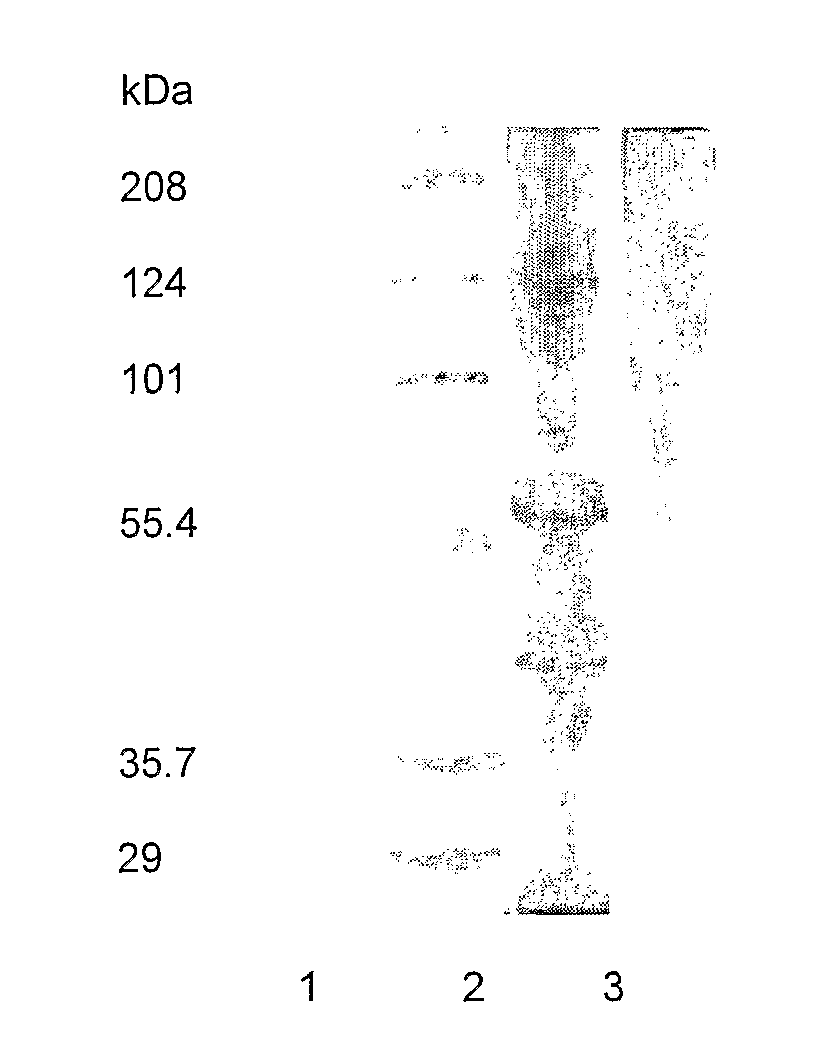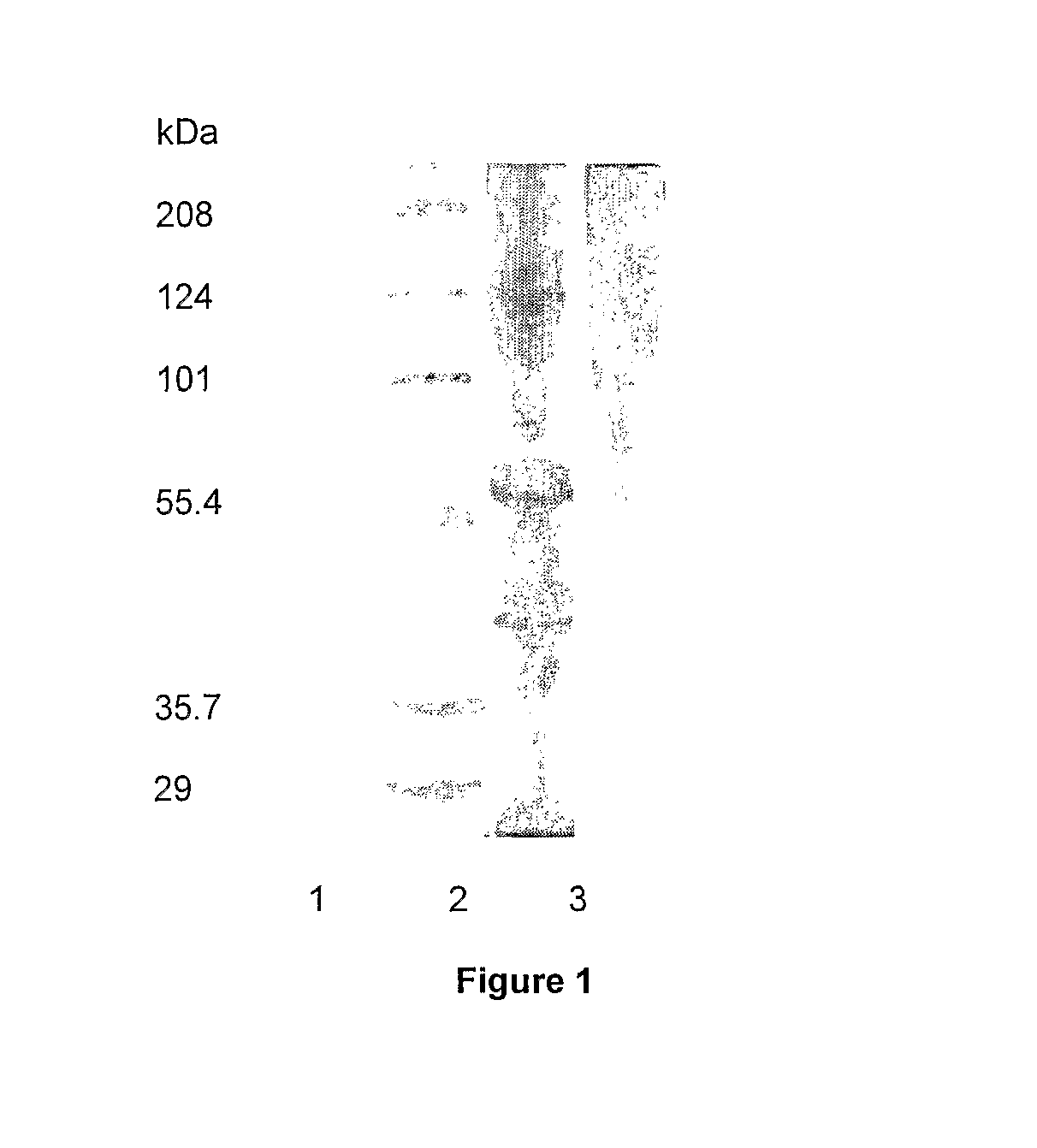Extraction Of Gelatin
a gelatin and extraction technology, applied in the field of gelatin extraction, can solve the problems of difficult detection, invariably fatal, and bse, and achieve the effect of excessive denaturation of gelatin
- Summary
- Abstract
- Description
- Claims
- Application Information
AI Technical Summary
Benefits of technology
Problems solved by technology
Method used
Image
Examples
example 1
Extraction of Gelatin from the Whole Muscle Tissue of Abalone
[0035]Step 1. Frozen abalone meat was stored at −18° C. on arrival at QBT.[0036]Step 2. Abalone meat was removed from the freezer and thawed as required.[0037]Step 3. The pigmentation from the foot area and adductor area was removed by scrubbing with a stiff bristled brush under running water.[0038]Step 4. The skirt area of the abalone was trimmed off with a scalpel and stored for later use.[0039]Step 5. The mouth area was cut away using a scalpel and stored for later use.[0040]Step 6. The whole muscle tissue was cut into quarters and weighed.[0041]Step 7. The tissue was blended by passage through a Comitrol 3600. Hold-up in the cutting head was flushed through with deionised water. The blended tissue was weighed.[0042]Step 8. The blended tissue was pretreated in 6 L of 0.02M NaOH per kg of blended meat with mixing for 60 minutes at room temperature.[0043]Step 9. The pretreatment slurry was centrifuged at 6000×g for 5 minu...
example 2
Analysis of Freeze Dried Gelatin Analyses of Freeze Dried Gelatin
1. Appearance
[0055]Note was made of the colour, odour, and texture of the material by visual inspection.
2. Yield
[0056]The yield of freeze dried product was determined on a weight basis with respect to the initial (pre-blending) abalone meat weight used for the process.
3. Solubility
[0057]The solubility of freeze dried material was tested at a concentration of 1%. To around 50 mg of freeze dried material, deionised water was added to 10 mg / ml and stirred on a magnetic stirrer at room temperature. The clarity of the solution was observed.
[0058]Protein estimation was carried out using the Pierce BCA assay. This method is based on the reduction in alkaline conditions of Cu2+, to Cu1+ by protein (buiret reaction) and the colourimetric detection of Cu1+ using bicinchoninic acid (BCA).
[0059]An appropriate amount of working reagent was prepared by the mixture of 50 parts of reagent A and 1 part of reagent B...
PUM
| Property | Measurement | Unit |
|---|---|---|
| pH | aaaaa | aaaaa |
| temperature | aaaaa | aaaaa |
| temperature | aaaaa | aaaaa |
Abstract
Description
Claims
Application Information
 Login to View More
Login to View More - R&D
- Intellectual Property
- Life Sciences
- Materials
- Tech Scout
- Unparalleled Data Quality
- Higher Quality Content
- 60% Fewer Hallucinations
Browse by: Latest US Patents, China's latest patents, Technical Efficacy Thesaurus, Application Domain, Technology Topic, Popular Technical Reports.
© 2025 PatSnap. All rights reserved.Legal|Privacy policy|Modern Slavery Act Transparency Statement|Sitemap|About US| Contact US: help@patsnap.com


